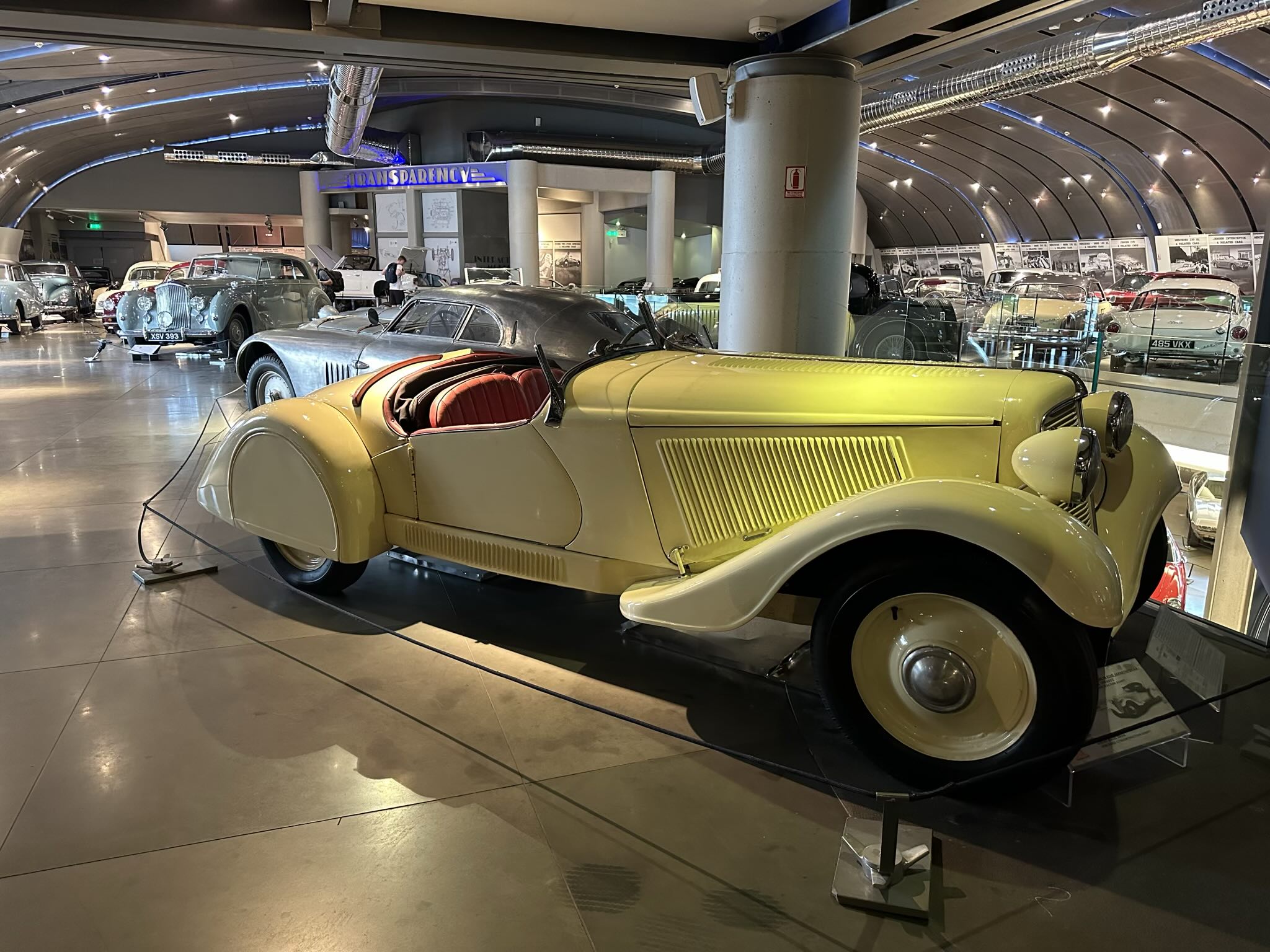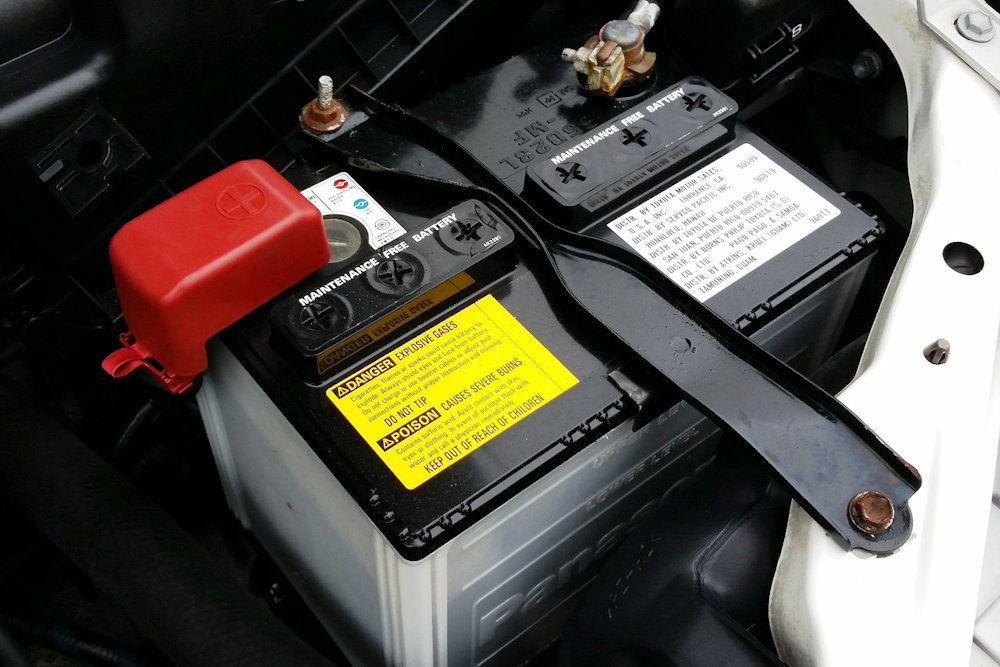
Supercars often represent the pinnacle of automotive engineering and design, pushing boundaries and setting new standards. Yet, the automotive world is a fickle beast, and not every machine, no matter how ambitious or cutting-edge, finds immediate adoration. Sometimes, a car is simply too far ahead of its time, too flawed in its execution, or just plain misunderstood by the masses upon release. These are the machines that initially flopped, sitting unsold on dealer lots, whispered about as cautionary tales of design and financial misjudgment.
But here’s the thing about car culture: time has a funny way of shifting perspectives. What was once dismissed as a commercial failure can, decades later, transform into a highly sought-after collectible. This isn’t just about scarcity, though limited production runs certainly play a part. It’s about the unique designs, the storied histories, the audacious engineering, and yes, sometimes even the sheer quirkiness that contributes to their newfound appeal among enthusiasts and collectors alike. We’re talking about vehicles that went from showroom shame to auction glory, proving that yesterday’s disappointments can indeed become today’s most coveted icons.
Join us on a journey through the fascinating world of automotive redemption, where we unearth the tales of cars that stumbled out of the gate but ultimately captured the hearts and wallets of discerning collectors. These aren’t just vehicles; they’re narratives on wheels, testaments to ambition, miscalculation, and ultimately, a triumphant resurgence in value and respect. Prepare to have your notions of “failure” delightfully redefined.
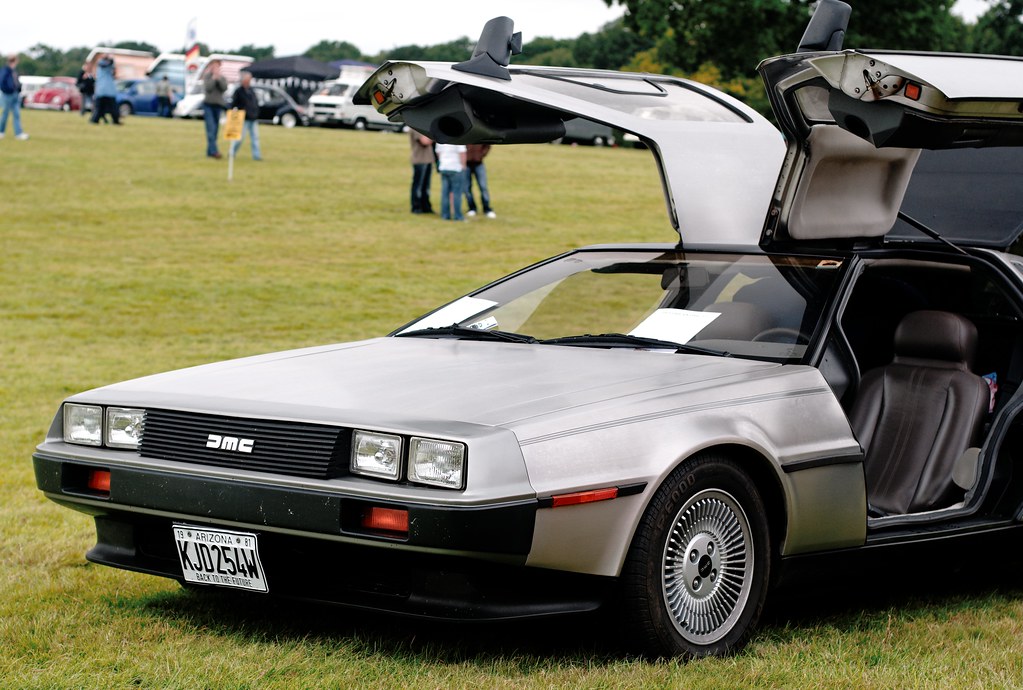
1. **DeLorean DMC-12**Ah, the DeLorean DMC-12. If ever there was a car synonymous with “flop” that later became an icon, this is it. Launched in the early 1980s, this stainless steel-bodied vehicle with its instantly recognizable gull-wing doors was supposed to be the future of sports cars. Unfortunately, it ended up being more famous for its appearance in the “Back to the Future” movies than for its actual performance or initial market success.
Underneath that striking Giorgetto Giugiaro design, the DMC-12 struggled. It was plagued by production issues, and its 130 horsepower V6 engine was widely regarded as lackluster, especially for a car marketed as a high-performance machine. Critics were decidedly unimpressed, sales never truly took off, and the company itself collapsed in scandal. John DeLorean, the visionary behind it, had produced something unusual, a far cry from the Pontiac GTO and Trans Am he’d also helped create.
However, Hollywood, as it often does, stepped in and changed everything. The “Back to the Future” franchise transformed the DMC-12 from a commercial failure into an enduring legend, forever linking it to time travel and pop culture cool. What was once a laughingstock in the 1980s found a surprising resurgence in the following decade, becoming an indelible icon.
Today, the DeLorean is no longer a punchline. Collectors value the DMC-12 for its distinctive look, the sheer nostalgia it invokes, and its unique place in cinematic history. With only around 9,000 units originally produced, its rarity adds significantly to its allure. Prices for well-maintained examples have been steadily climbing, often fetching $65,000 to over $100,000 depending on condition, a massive leap from the clearance prices dealers once practically begged buyers to pay in the ‘80s.
Car Model Information: 1982 Delorean DMC-12
Name: DMC DeLorean
Alt: 1983 DeLorean
Caption: 1983 DeLorean
Manufacturer: DeLorean Motor Company
Production: January 21, 1981 – December 1982
ModelYears: 1981–1983
Assembly: Dunmurry
Designer: Giorgetto Giugiaro
Class: Sports car
BodyStyle: coupé
Layout: Rear-engine, rear-wheel-drive layout
Doors: Gull-wing doors
Engine: 2.85 L
Abbr: on
Powerout: 130 hp
Transmission: 5-speed manual ,3-speed automatic
Wheelbase: 2413 mm
Length: 4267 mm
Width: 1988 mm
Height: 1140 mm
Weight: 1233 kg
Sp: us
Categories: 1980s cars, All Wikipedia articles written in American English, Articles with short description, Automobiles with backbone chassis, Automobiles with gull-wing doors
Summary: The DMC DeLorean is a rear-engine, two-seat sports car manufactured and marketed by John DeLorean’s DeLorean Motor Company (DMC) for the American market from 1981 until 1983—ultimately the only car brought to market by the fledgling company. The DeLorean is sometimes referred to by its internal DMC pre-production designation, DMC-12, although this was not used in sales or marketing materials for the production model.
Designed by Giorgetto Giugiaro, the DeLorean is noted for its gull-wing doors and brushed stainless-steel outer body panels, as well as its lack of power and performance. Though its production was short-lived, the DeLorean became widely known after it was featured as the time machine in the Back to the Future films.
With the first production car completed on January 21, 1981, the design incorporated numerous minor revisions to the hood, wheels and interior before production ended in late December 1982, shortly after DMC filed for bankruptcy and after total production reached an estimated 9,000 units.
Despite the car having a reputation for poor build quality and an unsatisfactory driving experience, the DeLorean continues to have a strong following, driven in part by the popularity of Back to the Future. 6,500 DeLoreans were estimated to still be on the road as of 2015.
Get more information about: DMC DeLorean
Buying a high-performing used car >>>
Brand: DeLorean Model: DMC-12
Price: $129,950 Mileage: 3,145 mi.
Read more about: From Street Queens to Garage Dreams: 14 Everyday ’80s Cars Now Prized Collector Favorites
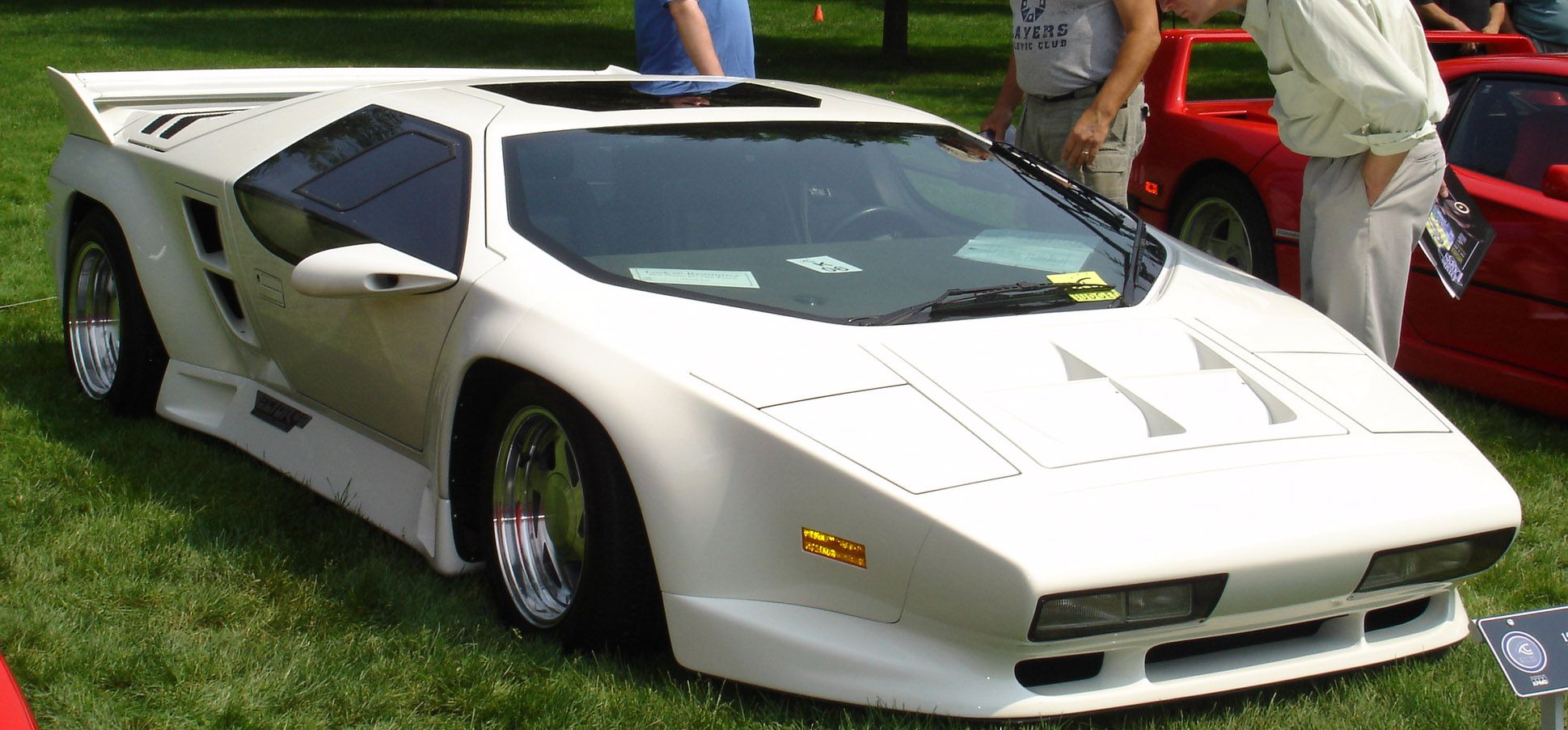
2. **Vector W8**Now, if the DeLorean was a pop culture flop, the Vector W8 was an entirely different beast: an ambitious, aerospace-inspired supercar that was genuinely ahead of its time, but stumbled hard out of the gate. Introduced in the late 1980s, it looked like something ripped from a sci-fi movie, boasting an aerospace-inspired design and a twin-turbocharged V8 engine that promised cutting-edge performance.
But as with many bold ventures, the W8 was plagued by significant production delays and crippling financial difficulties. The dream of delivering an American-made supercar to rival the European elite was a noble one, but the execution proved incredibly challenging. This meant that the number of units that actually saw the light of day was staggeringly low.
Only 17 units of the Vector W8 were ever made. This extreme rarity, coupled with its radical design and the sheer audacity of its engineering, contributed to its initial failure in the market as it simply couldn’t get cars into customers’ hands consistently. Yet, these very shortcomings are what make it so compelling today.
Despite its rocky start, the Vector W8’s futuristic design and its undeniable rarity have turned it into a highly coveted collector’s item. Its unique place in automotive history as one of America’s few, and perhaps wildest, attempts at a true supercar has only added to its desirability. Collectors who appreciate ambitious, uncompromised engineering and a truly unique backstory are drawn to this incredible machine.
Read more about: The 11 Critical Mistakes Even Expert Gamers Make When Building a High-End PC
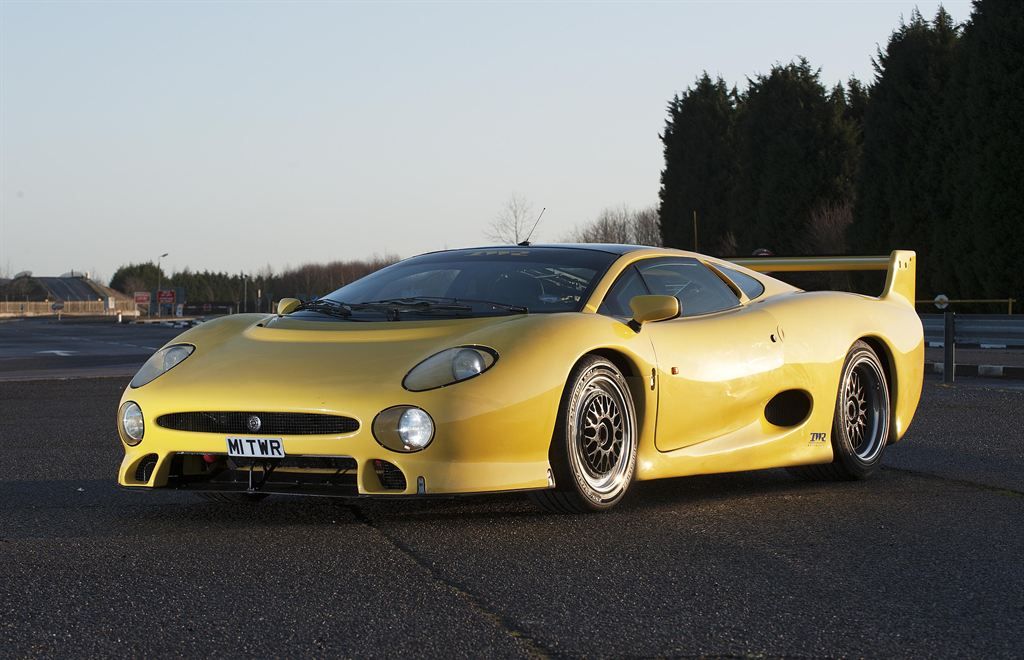
3. **Jaguar XJ220**Next up, we have the Jaguar XJ220, a car that once held the crown as the fastest production car in the world after its launch in the early 1990s. That’s a serious pedigree, right? You’d think such an achievement would guarantee instant legend status, but the XJ220 faced a rather lukewarm reception and a fair bit of criticism that led to its initial market struggles.
The primary complaints revolved around two major points: its astronomical price tag and, perhaps more significantly, a controversial engine swap. Originally promised with a magnificent V12 engine, Jaguar made the decision to switch to a V6 engine before production. For many, this felt like a bait-and-switch, a dilution of the supercar dream that led to numerous canceled orders and a bruised reputation.
Yet, like a fine wine, the XJ220 has aged exceptionally well. Today, it’s celebrated not only for its sleek design but also for its undeniable engineering prowess. That V6, while initially scorned, was still an incredible piece of kit, allowing the car to achieve its record-breaking top speed of 217 mph, a figure that remains impressive even by modern standards.
Collectors are now incredibly drawn to the XJ220, especially given its limited production run of just 282 units. It has become a powerful symbol of Jaguar’s ambitious foray into the supercar market, representing a moment where the British marque truly pushed the envelope. This makes it a highly sought-after piece for those who appreciate both speed and a compelling underdog story.
Read more about: A Financial Black Hole: 13 Sedans Experts Say Drain Your Bank Account After the First Year
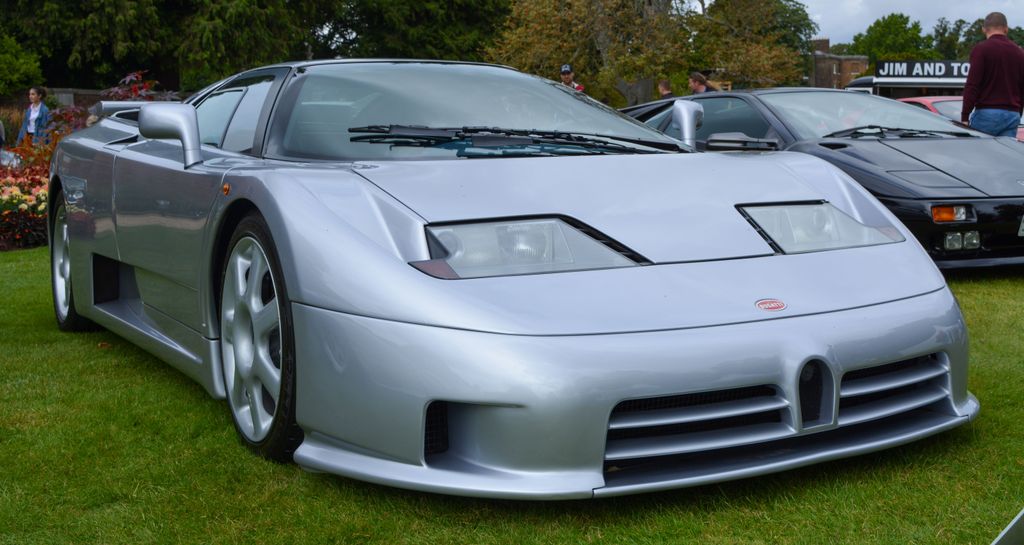
4. **Bugatti EB110**The Bugatti EB110 is a story of grand ambition, cutting-edge technology, and unfortunately, financial calamity. This ambitious project, launched in the 1990s, aimed to revive the storied Bugatti brand, and it did so with serious intent. It featured a quad-turbocharged V12 engine and advanced technology that was truly revolutionary for its era, designed to reclaim Bugatti’s rightful place at the pinnacle of automotive engineering.
However, the company behind this magnificent machine faced severe financial difficulties, ultimately leading to bankruptcy. This meant that only a precious 139 units of the EB110 were ever produced, a devastating blow for what was an engineering masterpiece. It was a premature end to a promising rebirth, consigning the car to the “what could have been” category for many years.
Fast forward to today, and the narrative has completely flipped. Collectors now intensely admire the EB110, not just for its innovative engineering, but for its pivotal role in the *first* revival of the Bugatti marque. It represents a crucial bridge between the original legendary Bugattis and the modern era of hypercars under Volkswagen’s ownership.
The rarity of the EB110, coupled with the incredible resurgence of Bugatti as a brand, has dramatically increased its desirability. Well-maintained examples now command incredibly high prices at auctions, far exceeding their original asking price. This once commercially troubled supercar is now a blue-chip investment, revered for its historical significance and its breathtaking performance.
Read more about: 14 Celebrity Cars That Are So Extravagant, They Scream “Too Much Money!”

5. **Aston Martin Lagonda (1976)**Talk about a car that divided opinion! The 1976 Aston Martin Lagonda was, to put it mildly, a radical departure from traditional car design, especially for a brand known for its elegant, flowing lines. When it debuted, it was an unusual sight, earning it the nickname “the wedge” for its sharp, angular lines and famously long, awkwardly proportioned, boxy shape. It even featured an advanced digital dashboard, a technological marvel for the 1970s.
Despite its undeniable innovation and the prestige of the Aston Martin name, the Lagonda was widely regarded as unattractive, becoming the subject of industry jokes and drawing significant criticism. Its lofty price tag of $75,000 was a deterrent, and to compound matters, it was plagued by reliability issues, particularly with its advanced electronics. Aston Martin had hoped this vehicle would provide a much-needed financial boost, but very few units were produced, leading to commercial failure.
Yet, as often happens with cars that dare to be different, time has been remarkably kind to the Lagonda. Despite its initial struggles and unconventional looks, this four-door oddity has gained a significant cult following. It’s now celebrated for its futuristic design, its daring engineering innovation, and its sheer uniqueness within the world of classic luxury cars.
Its scarcity, with fewer than 650 units produced across its entire run, has made it a truly desirable piece for collectors seeking something genuinely distinctive. This once-mocked design has now found its place among high-end automotive collections, with auction prices often exceeding $300,000, transforming a commercial curiosity into a significant, valuable investment.
Car Model Information: 2024 BMW X5 sDrive40i
Caption: Aston Martin Lagonda Series 2
Name: Aston Martin Lagonda
Manufacturer: Aston Martin
Designer: William Towns
Production: 1974–1990,645 produced
Assembly: Newport Pagnell,Buckinghamshire,England
Predecessor: Lagonda Rapide
Successor: Lagonda Taraf
Class: Full-size,luxury car
BodyStyle: sedan (car)
Layout: Front-engine, rear-wheel-drive layout
Engine: cvt,V8 engine
Transmission: Torqueflite,automatic transmission
Wheelbase: 2916 mm
Abbr: on
Length: 5282 mm
Width: 1816 mm
Height: 1302 mm
Categories: 1980s cars, 1990s cars, All Wikipedia articles written in British English, All articles with unsourced statements, Articles with short description
Summary: The Aston Martin Lagonda is a full-size luxury four-door saloon manufactured by British manufacturer Aston Martin between 1974 and 1990. A total of 645 were produced. The name was derived from the Lagonda marque that Aston Martin had purchased in 1947. There are two distinct generations: the original, short-lived 1974 design based on a lengthened Aston Martin V8, and the entirely redesigned, wedge-shaped Series 2 model introduced in 1976.
In 2014, Aston Martin confirmed it would launch a new Lagonda model called the Taraf for the Middle-East market, sold on an invitation-only basis as a successor to this saloon. As of 2022, 113 remain registered in the United Kingdom, though 82 are SORN (unregistered for routine road use).
Get more information about: Aston Martin Lagonda
Buying a high-performing used car >>>
Brand: Aston Martin Model: Lagonda
Price: $49,000 Mileage: 39,591 mi.
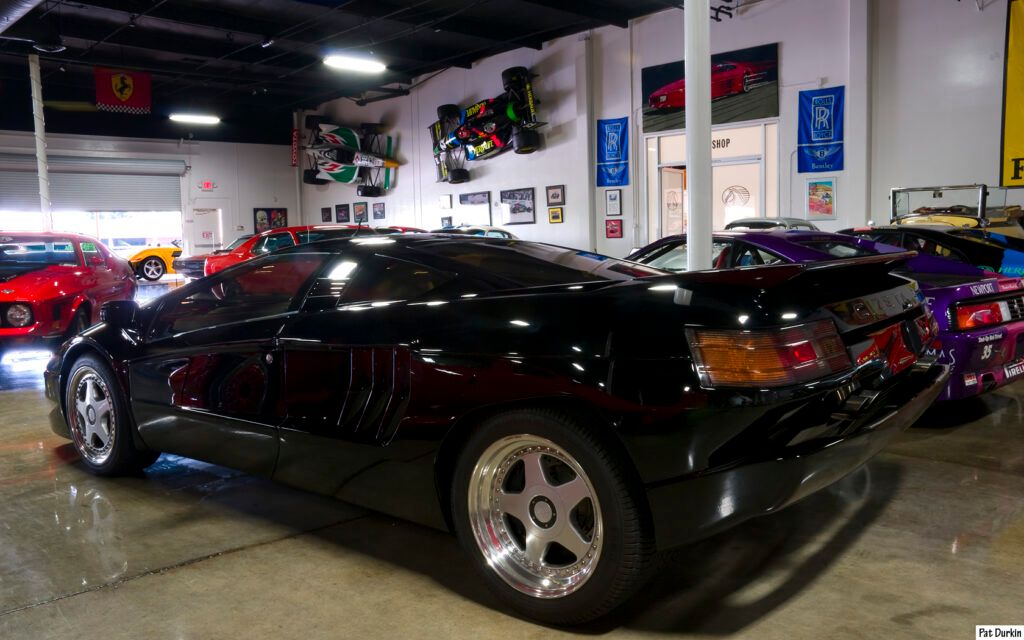
6. **Cizeta-Moroder V16T**If the Lagonda was daring, the Cizeta-Moroder V16T was nothing short of audacious. This was one of the most ambitious supercars of the late 1980s, a vehicle that screamed excess and engineering bravado from every angle. Its most striking feature? A transverse V16 engine, a marvel of engineering that was almost unheard of, giving it unparalleled bragging rights.
Beyond the engine, the V16T featured a truly striking design, a blend of exotic flair and aggressive lines that left an indelible impression. It was a car born from a desire to create something truly unparalleled, a statement piece that would stand out even among the era’s burgeoning supercar scene. It had all the ingredients for legendary status.
Unfortunately, ambition and engineering audacity don’t always translate into commercial success. The Cizeta-Moroder V16T suffered from an incredibly high price and an even more limited production. Only a handful of these extraordinary machines were ever actually made, meaning it never achieved any real market traction or commercial viability. It was a shooting star that burned brightly but briefly.
Today, however, the V16T is revered for those very qualities that limited its initial run: its incredible engineering audacity and its extreme rarity. It represents a unique, almost mythical chapter in automotive history, a testament to what happens when visionaries push boundaries regardless of commercial realities. Collectors are drawn to its fantastical backstory, the craftsmanship involved in its creation, and its undeniable exotic appeal, making it a prized possession for the fortunate few who own one.
Read more about: The 23 Most Ambitious Automotive Failures
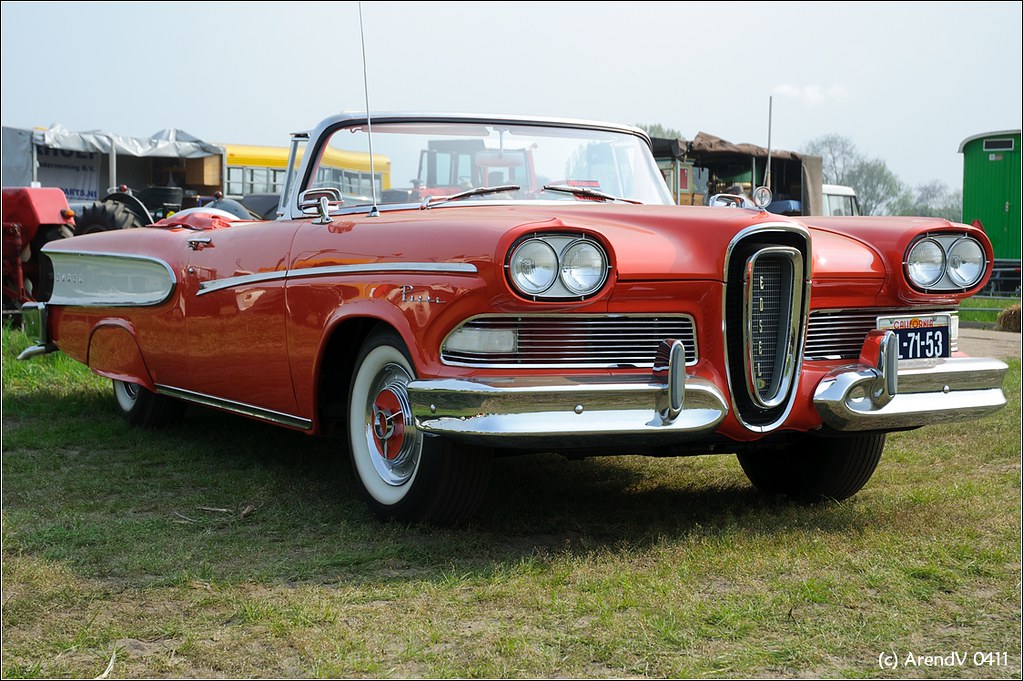
7. **Ford Edsel**The Ford Edsel stands as one of the most infamous failures in automotive history, a textbook example of how even massive investment and good intentions can go awry. Intended to honor Edsel Ford, the son of Henry Ford, this car was envisioned by Henry Ford Jr. as the future of the company, designed to bridge a crucial market gap. Expectations were sky-high, making its poor reception a devastating blow.
Ford poured an astonishing $250 million into market research and development for the Edsel, which debuted in 18 different models. The prices ranged from $2,484 to $3,766, targeting a specific segment of buyers. However, Ford’s market research completely misread the shifting trends, failing to recognize the growing demand for smaller, more affordable cars in the late 1950s.
Compounding the problem, the Edsel’s design was widely criticized as unattractive and awkward. Its distinctive “horse collar” grille, in particular, became a symbol of its aesthetic woes, turning off potential buyers in droves. Ford had projected sales of 400,000 units, but reality fell dramatically short of that target, and after just a few years, the Edsel was unceremoniously scrapped.
Yet, the story doesn’t end there. Despite its spectacular failure at launch, the Edsel has since become a highly prized collector’s item. These once-dismissed cars now hold a truly unique place in automotive history, not just for their rarity but for their legacy as one of the industry’s greatest, most publicized miscalculations. At auctions, Edsels can now command prices exceeding $100,000, a truly remarkable redemption for a car that once epitomized failure.
Alright, so we’ve journeyed through the automotive graveyard and seen some true legends rise from the ashes, haven’t we? It’s a wild ride, witnessing how cars that once gathered dust on dealer lots now command astronomical prices. But hold onto your lug nuts, because we’re far from done! There are even more compelling stories of overlooked, misunderstood, and sometimes just plain weird classics that have found their tribe and, crucially, a passionate following among collectors. Get ready to dive into the next batch of automotive phoenixes, because these tales are just as intriguing, offering a fresh perspective on what makes a car truly valuable.
Car Model Information: 1959 Edsel Ranger
BirthName: Edsel Bryant Ford
Caption: Ford in 1921
BirthDate: [object Object]
BirthPlace: Detroit, Michigan
DeathDate: [object Object]
DeathPlace: Grosse Pointe Shores, Michigan
Occupation: Automobile executive
Title: Ford Motor Company
Spouse: [object Object]
Parents: Henry Ford,Clara Bryant Ford
Relations: Edsel Ford II
Children: Henry Ford II,Benson Ford,Josephine Ford,William Clay Ford Sr.
Categories: 1893 births, 1943 deaths, 20th-century American businesspeople, All Wikipedia articles written in American English, All articles with dead external links
Summary: Edsel Bryant Ford (November 6, 1893 – May 26, 1943) was an American business executive and philanthropist, who was the only child of pioneering industrialist Henry Ford and his wife, Clara Jane Bryant Ford. He was the president of the Ford Motor Company from 1919 until his death in 1943.
He worked closely with his father, as sole heir to the business, but was keen to develop cars more exciting than the Model T (“Tin Lizzie”), in line with his personal tastes. Even as president, he had trouble persuading his father to allow any departure from this formula. Only a change in market conditions enabled him to develop the more fashionable Model A in 1927. Edsel also founded the Mercury division and was responsible for the Lincoln-Zephyr and Lincoln Continental. He introduced important features, such as hydraulic brakes, and greatly strengthened the company’s overseas production.
Ford was a major art benefactor in Detroit and also financed Admiral Richard Byrd’s polar explorations. He died of stomach cancer aged 49. Henry Ford temporarily reassumed the presidency of Ford Motor Company on Edsel’s death, then Edsel’s eldest son, Henry Ford II, succeeded Henry as president of the company in 1945.
He was also a member of the board of directors of American IG, the American subsidiary of the German chemical conglomerate IG Farben.
Get more information about: Edsel Ford
Buying a high-performing used car >>>
Brand: Ford Model: Edsel
Price: $19,000 Mileage: 21,529 mi.
Read more about: The Rise and Fall: A Comprehensive Look at Why Ford Ended the Mercury Brand After 70+ Years

8. **Plymouth Fury (1958)**The Plymouth Fury, particularly the 1958 model, is a textbook example of a car that was simply unlucky with its timing. It started life as a trim package for the Plymouth Belvedere, but eventually, it broke free, becoming a standalone model. For its era, this was the most expensive Plymouth you could buy, retailing at a cool $3,067, which was serious coin back then.
This was a sleek, powerful machine, a true muscle car before the term was even widely coined, packing serious punch with its available 5.2-liter engine making 290 horsepower, or an even hotter 5.7-liter delivering 305 ponies. It even shared its guts with the Dodge Coronet, a car often favored by law enforcement, giving it some street cred. The Fury was styled to turn heads, available in five different body styles, and by all accounts, it should have been a smash hit.
So, what went wrong? Well, the Fury hit showrooms right in the middle of a recession, a particularly cruel twist of fate. Buyers, understandably, weren’t looking for powerful, slightly more expensive muscle cars. They wanted fuel-efficient, affordable options, and the Fury just didn’t fit that bill. Sales suffered, and the car became another footnote in the era’s economic woes, destined for obscurity.
But then, decades later, a literary and cinematic masterpiece stepped in. Stephen King’s novel *Christine*, and its subsequent film adaptation, cast a menacing, supernatural 1958 Plymouth Fury as its star. Overnight, this once-overlooked classic was thrust into the spotlight, its menacing charm captivating a new generation. It literally became the car that wouldn’t die.
Today, that pop culture influence has made the Plymouth Fury incredibly sought after. Collectors are willing to pay top dollar for a piece of this terrifying, yet undeniably cool, automotive history. You’re looking at an average price of around $50,000, but depending on condition and provenance, these beauties can climb significantly higher at auction. From recession victim to horror icon, the Fury’s redemption story is truly wild.
Car Model Information: 1960 Plymouth Fury
Name: Plymouth Fury
Caption: 1959 Plymouth Sport Fury
Manufacturer: Plymouth (automobile)
Aka: Plymouth Sport Fury (1959, 1962–1971),Plymouth VIP (1966–1969)
Production: 1958–1978
ModelYears: 1959–1978
Assembly: bulleted list
Class: Full-size,Mid-size,Full-size,Mid-size,Full-size,Mid-size
Layout: FR layout
Predecessor: Plymouth Belvedere,Plymouth Plaza,Plymouth Savoy
Successor: Plymouth Gran Fury,Plymouth Gran Fury
Sp: us
Categories: 1960s cars, 1970s cars, All articles needing additional references, Articles needing additional references from December 2018, Articles with short description
Summary: The Plymouth Fury is a model of automobile that was produced by Plymouth from 1955 until 1989. It was introduced for the 1956 model year as a sub-series of the Plymouth Belvedere, becoming a separate series one level above the contemporary Belvedere for 1959. The Fury was a full-size car from 1959 until 1961, then a mid-size car from 1962 until 1964, again, a full-size car from 1965 through 1974, and again, a mid-size car from 1975 through 1978. From 1975 until 1977, the Fury was sold alongside the full-size Plymouth Gran Fury. In 1978, the B-body Fury was the largest Plymouth, and by 1979, there was no large Plymouth. This product gap was filled in 1980 with the R-body Gran Fury, followed by the M-body Fury in 1982. Production of the last V8, RWD Plymouth Fury ended at the Kenosha Main assembly plant in Kenosha, WI, on December 23, 1988. Unlike its sibling brand, Dodge, Plymouth would not live to see the resurgence of the large, V8/RWD sedan.
Get more information about: Plymouth Fury
Buying a high-performing used car >>>
Brand: Plymouth Model: Fury
Price: $75,000 Mileage: 44,509 mi.

9. **Alfa Romeo Montreal (1970–1977)**When the Alfa Romeo Montreal first graced the world as a concept car, it absolutely stunned crowds. Seriously, imagine seeing this exotic, futuristic-looking machine with its distinctive headlights and sleek lines, all while housing a glorious V8 engine. It was an engineering marvel and a design statement, instantly captivating anyone who laid eyes on it.
However, moving from show car to production car often involves a few… *compromises*. When the Montreal finally hit the market, it suffered from a classic case of over-ambition meeting commercial reality. Despite its undeniable aesthetic appeal and the pedigree of that V8, it was priced higher than formidable rivals like Porsches and Jaguars. That’s a tough crowd to compete with, especially when reliability started to become a rather large question mark.
As a result, sales were, shall we say, less than stellar. Only about 3,900 units were ever built during its seven-year production run. This meant that a car with so much promise, so much inherent Italian flair, was largely overlooked by the masses, destined for the annals of “what could have been.” It was a dream wrapped in a gorgeous body, but one that few could afford or maintain.
Fast forward fifty years, and the narrative has completely flipped. Those very qualities that led to its initial struggles—its scarcity, its exotic Italian design, and the sheer audacity of its engineering—have made it a blue-chip classic. It’s now celebrated for its unique blend of performance and styling, a truly distinctive piece of automotive art.
Today, these Montreals aren’t just selling; they’re commanding serious attention. We’re talking prices regularly trading for $80,000 to $120,000, with immaculate, concours-level examples soaring even higher. This once-misunderstood Italian masterpiece has found its rightful place, admired by those who appreciate its blend of art and engineering, proving that sometimes, being too unique for your own good eventually pays off handsomely.
Car Model Information: 2024 BMW X5 sDrive40i
Name: Alfa Romeo Montreal
Manufacturer: Alfa Romeo
Production: 1970–1977
Assembly: Turin
Designer: Marcello Gandini
Class: Sports car
BodyStyle: 2+2 (car body style),coupé
Layout: Front-engine, rear-wheel-drive layout
Related: Alfa Romeo Sprint GT (Veloce)
Engine: DOHC,V8 engine
Transmission: ZF Friedrichshafen,Manual transmission
Wheelbase: 2.35 m
Abbr: on
Length: 4.22 m
Width: 1.672 m
Height: 1.205 m
Weight: 1270 kg
Sp: uk
Categories: 2+2 coupés, Alfa Romeo vehicles, Articles with short description, Bertone concept vehicles, Bertone vehicles
Summary: The Alfa Romeo Montreal is a sports car produced by the Italian automobile manufacturer Alfa Romeo from 1970 to 1977.
Get more information about: Alfa Romeo Montreal
Buying a high-performing used car >>>
Brand: Alfa Romeo Model: Montreal
Price: $49,000 Mileage: 39,591 mi.
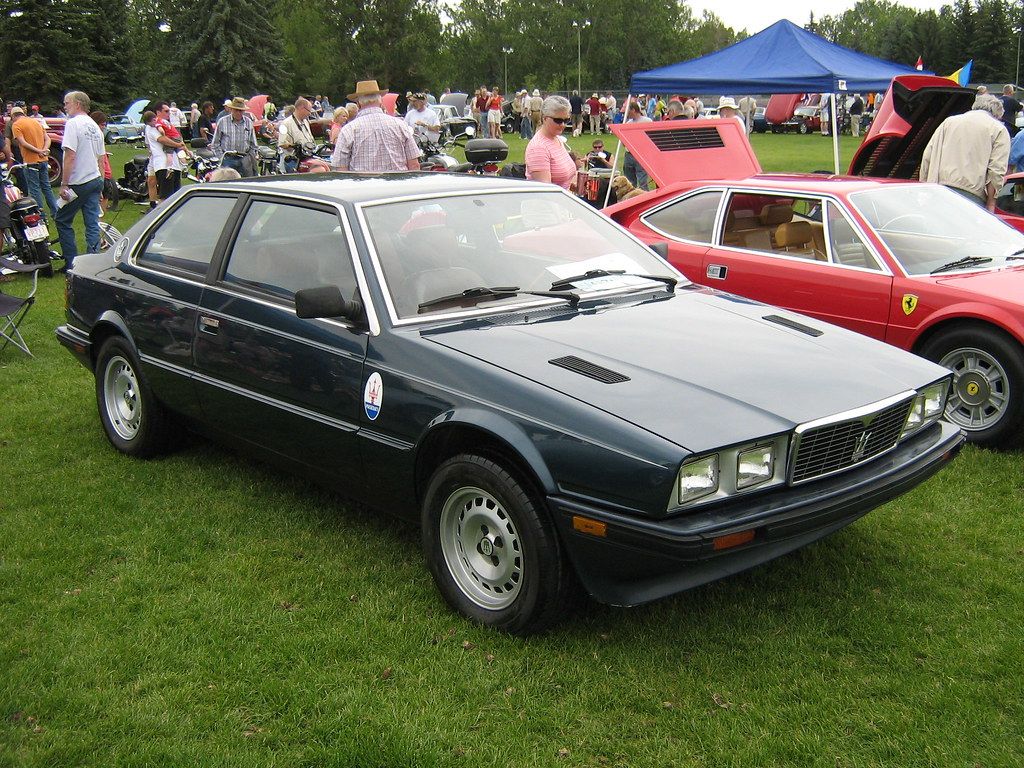
10. **Maserati Biturbo**Ah, the Maserati Biturbo. Launched in the early 1980s, this was Maserati’s grand plan to bring Italian luxury and spirited performance to a broader audience. The idea was brilliant: a compact, luxurious, and powerful coupe that could inject some much-needed cash into the venerable brand. It had twin-turbocharged engines, a bold styling, and a sumptuous leather interior that practically screamed ‘Italian executive express.’
Unfortunately, the Biturbo’s execution was, well, a bit *Maserati* in the less flattering sense of the word. It quickly gained a reputation for significant quality control issues and reliability problems that would make even the most patient owners pull their hair out. Electrical gremlins, rust, and engine troubles became synonymous with the name, quickly leading to a poor reputation that dogged the car for decades.
This was a car that tried to be everything to everyone but ended up being a headache for many. Dealers struggled to move them, and buyers, once bitten, were twice shy. The dream of an accessible Maserati almost became a nightmare, pushing the brand’s reputation to the brink, and cementing the Biturbo’s place as a poster child for unreliable Italian cars.
Yet, over the years, a curious thing has happened. The Biturbo has begun to gain a quiet, but fervent, appreciation. Enthusiasts are looking beyond its checkered past and recognizing its elegant design, luxurious interior, and the sheer, unadulterated driving experience it offers when everything is working as it should. It’s a distinctly *Maserati* experience, for better or worse.
Today, a small but dedicated community of enthusiasts actively seeks out well-preserved examples. They’re willing to tackle the quirks and the maintenance, all for the joy of owning a unique piece of Italian automotive history. The Biturbo’s reputation is slowly but surely being rehabilitated, transforming it from a punchline into a classic Maserati with a distinctive character, a true dark horse in the collector’s stable.
Car Model Information: 1985 Maserati Biturbo Base
Name: Maserati Biturbo
Caption: Maserati Biturbo E
Manufacturer: Maserati
Production: 1981–1994
Assembly: Modena,Rho, Lombardy
Related: Maserati Shamal,Maserati Ghibli#Ghibli (AM336),Maserati Barchetta,Maserati Quattroporte#Quattroporte IV,Maserati Karif
Designer: Pierangelo Andreani (1977),Marcello Gandini,Zagato
Class: Grand tourer
BodyStyle: 2+2 (car body style),coupé,sedan (car),Cabriolet (automobile)
Layout: Front-engine, rear-wheel-drive layout
Engine: twin-turbocharged,2.5 L twin-turbocharged 90° V6,2.8 L twin-turbocharged 90° V6
Transmission: ZF Friedrichshafen,Automatic transmission,ZF Friedrichshafen
Wheelbase: {{convert,2,514,mm,in,1,abbr=on
Length: {{convert,4,150,mm,in,1,abbr=on
Abbr: on (228)
Width: {{convert,1,710,mm,in,1,abbr=on
Height: {{convert,1,310,mm,in,1,abbr=on
Successor: Maserati Ghibli#Ghibli (AM336),Maserati Quattroporte#Quattroporte IV
Sp: uk
Categories: 1990s cars, All articles needing additional references, All articles with unsourced statements, Articles needing additional references from November 2019, Articles needing additional references from October 2010
Summary: The Maserati Biturbo is a family of executive grand tourers produced by Italian automobile manufacturer Maserati between 1981 and 1994. The original Biturbo was a two-door, four-seater notchback coupé (of somewhat smaller dimensions than the BMW 3 Series of the time) featuring, as the name implies, a two-litre V6 engine with two turbochargers and a luxurious interior.
The car was designed by Pierangelo Andreani, Chief of Centro Stile Maserati up to 1981, somewhat influenced by the design of the then recent Quattroporte III (penned by Italdesign Giugiaro).
All Maserati models introduced from the Biturbo’s inception in 1981, until 1997, were based on variants of the original Biturbo architecture, including the later grand tourers like the Shamal and Ghibli II, as well as the 1994 fourth generation Quattroporte, which used an evolved and slightly stretched (to 2.65 m / 104.3 in wheelbase) Biturbo Saloon platform.
The Barchetta, while of a different layout entirely, used an ultimate version of the Biturbo V6 engine.
Get more information about: Maserati Biturbo
Buying a high-performing used car >>>
Brand: Maserati Model: Biturbo
Price: $13,899 Mileage: 18,319 mi.
Read more about: Why We Still Adore Them: A Deep Dive into the Most Gloriously Awkward ’80s Cars That Were So Ugly, They Became Icons
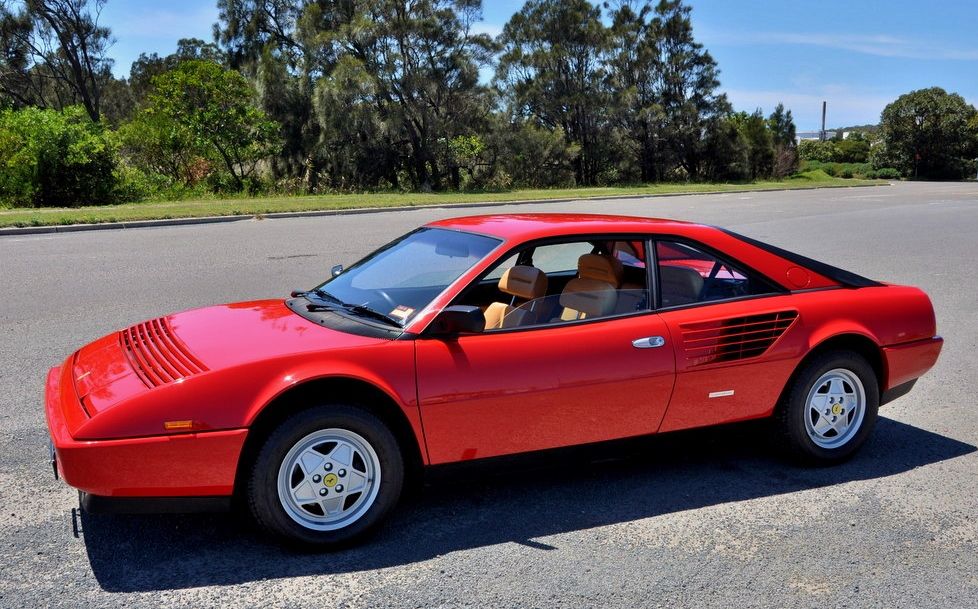
11. **Ferrari Mondial**Let’s talk Ferrari Mondial. Produced from the early 1980s to the early 1990s, this was a car that, for a long time, was the unloved stepchild of the Ferrari family. It was often criticized for its perceived lack of power, especially compared to its more flamboyant stablemates, and a styling that many considered, shall we say, “awkward” or “ungainly” for a Prancing Horse.
Adding insult to injury, the Mondial was one of Ferrari’s more affordable models. While that might sound like a good thing, for a brand built on exclusivity and aspirational pricing, it ironically diluted its allure. It was seen as the entry-level Ferrari, almost a compromise, which certainly didn’t help its image among purists who scoffed at its four-seat practicality and less aggressive stance.
So, the Mondial spent years in the shadows, largely ignored by collectors and often dismissed as “not a real Ferrari” by the snobbier corners of the automotive world. It was a tough life for a car that, by any objective measure, was still a V8-powered, mid-engined Italian sports car with incredible heritage. It just couldn’t shake off the criticisms leveled against it.
However, as with many misunderstood classics, time has proven to be a great equalizer. Today, the Mondial is experiencing a quiet renaissance. Collectors are beginning to appreciate its unique combination of practicality—a mid-engine layout with seating for four is genuinely rare—and undeniable Ferrari pedigree. It’s a genuine Ferrari, after all, and that means something.
Its previously “underrated” status has now made it an attractive and relatively accessible entry point into Ferrari ownership, a chance to own a piece of the legend without needing a second mortgage on your mansion. Interest and prices are steadily rising, as more and more enthusiasts realize the value proposition and the undeniable charm of this once-scorned F-car. The Mondial is finally getting the respect it deserves, proving that sometimes, being understated is its own form of brilliance.
Car Model Information: 1988 Ferrari Mondial
Name: Ferrari Mondial
Manufacturer: Ferrari
Production: Mondial 8: 1980–1982,703 produced,Mondial qv: 1983–1985,1,145 (coupé) produced,629 (cabriolet) produced,Mondial 3.2: 1986–1988,987 (coupé) produced,810 (cabriolet) produced,Mondial t: 1988–1993,858 (coupé) produced,1,017 (cabriolet) produced
Assembly: Modena
Designer: Pininfarina,Pierangelo Andreani (1976),Leonardo Fioravanti (engineer)
Class: Grand tourer
BodyStyle: coupé
Related: Ferrari 308 GTB,Ferrari 328,Ferrari 348
Predecessor: Ferrari GT4
Categories: 1990s cars, Articles with short description, CS1 French-language sources (fr), CS1 German-language sources (de), Cars discontinued in 1993
Summary: The Ferrari Mondial (Type F108) is a mid-engined, V8, grand tourer manufactured and marketed by Ferrari between 1980 and 1993 – with styling by Pininfarina and bodywork by Carrozzeria Scaglietti.
Offered as either a 2+2 coupé or cabriolet, the Mondial has the slightly higher roofline, greater dimensions and increased weight to accommodate occasional rear seating for children or small adults.
The Mondial replaced the Ferrari 308/208 GT4 coupé and remains the last V8, rear mid-engined, 2+2 Ferrari.
The name Mondial, French for global, reflected its worldwide conformance with 1980 safety and emission standards — as well as the company’s prominent motor racing victories. Ferrari had used the nameplate in the 1950s to celebrate Formula 1 World Championships and again in the 1970s to mark its Formula 1 World Constructors Championships.
Get more information about: Ferrari Mondial
Buying a high-performing used car >>>
Brand: Ferrari Model: Mondial
Price: $57,959 Mileage: 26,096 mi.
Read more about: Gear Up for Glory: 15 Unforgettable Rides That Defined the Legendary 1970s Automotive Scene
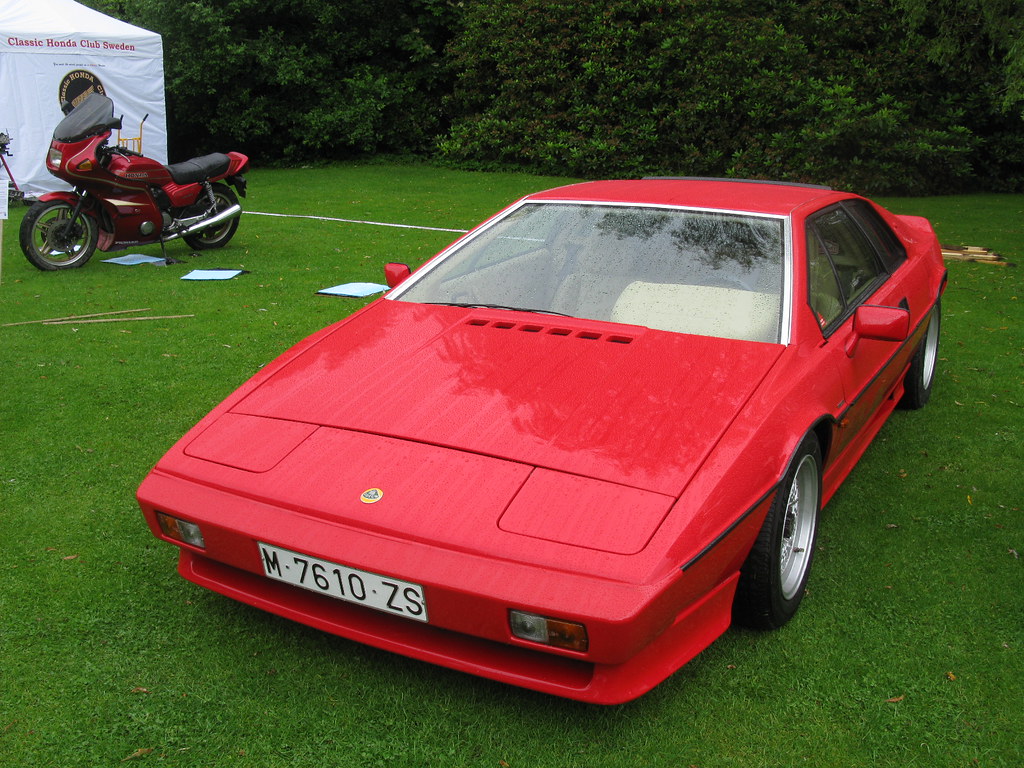
12. **Lotus Esprit Turbo**The Lotus Esprit Turbo holds a special place in the hearts of many, largely thanks to its starring roles in several James Bond films. For a generation, it wasn’t just a car; it was the submarine car, the ultimate spy gadget. That kind of pop culture endorsement usually guarantees instant legend status, but surprisingly, the Esprit Turbo had a bumpy ride in the market.
Despite its Hollywood fame and gorgeous, distinctive wedge-shaped design from the legendary Giorgetto Giugiaro (and later Peter Stevens), the Esprit Turbo struggled. It was plagued by the infamous “Lotus build quality issues”—a polite way of saying things occasionally fell off—and faced incredibly stiff competition from the likes of Porsche and Ferrari, who often offered a more refined ownership experience.
These challenges meant that while everyone *recognized* the Esprit, not everyone was rushing to buy one, at least not initially. The dream of owning a Bond car was often tempered by the reality of questionable reliability and the sheer effort involved in keeping it on the road. It was a fantastic driver’s car, no doubt, offering sublime handling, but those other factors held it back from mass appeal.
Today, though, the Esprit Turbo is finally getting its due. Enthusiasts are looking beyond the stereotypes and recognizing it for what it truly is: a brilliant, light, and incredibly engaging sports car. Its excellent driving dynamics are now celebrated, and its iconic status, undeniably tied to pop culture, adds immensely to its allure.
Limited production numbers also play a crucial role here. As fewer well-maintained examples survive, the demand for them grows. Prices are slowly but surely appreciating, making the Esprit Turbo a highly desirable classic for collectors who appreciate an engaging driving experience and a vehicle with a genuine cinematic legacy. It’s proof that sometimes, fame just needs a little time to truly ripen into fortune.
Car Model Information: 2020 Ford Mustang GT Premium
Name: Lotus Esprit
Caption: 1999 Lotus Esprit V8
Manufacturer: Lotus Cars
Production: 1976–2004,10,675 produced
Assembly: Hethel,Norfolk,England
Class: Sports car
BodyStyle: coupé
Layout: Longitudinal engine,Rear mid-engine, rear-wheel-drive layout
Sp: uk
Predecessor: Lotus Europa
Successor: Lotus Europa S
Categories: 1980s cars, 1990s cars, 2000s cars, 24 Hours of Le Mans race cars, All Wikipedia articles written in British English
Summary: The Lotus Esprit is a sports car built by Lotus Cars from 1976 to 2004 at their Hethel, England factory. It has a rear mid-engine, rear-wheel-drive layout. Together with the Lotus Elise / Exige, it is one of Lotus’ most long-lived models.
The Esprit was among the first of the (near) straight-lined, hard-edge creased, and sometimes wedge-shaped, polygonal “folded paper” designs of the prolific, and highly successful Italian industrial and automotive designer Giorgetto Giugiaro. The Esprit’s backbone chassis was later adapted to carry the body of the DeLorean car, another low-bodied, Giugiaro-drawn, sharp-creased, wedge-shaped sportscar design. In 1978, the first updates led to the series 2 and 2.2 L (134 cu in) engined Esprit S2.2, made until the 1982–1988 Series 3 and Turbo Esprit models, that used a 1980 Giugiaro designed aerodynamic and aesthetic restyling package.
The Lotus Esprit however, lived on through the 1990s, and into the 2000s. It received its first significant restyling by designer Peter Stevens, who also did styling on the McLaren F1. Stevens gave the Esprit overall softer lines and shapes, but the car did not get a new series number – it is instead often just called the ‘Stevens Esprit’, or by its project number, the X180, made from 1988 to 1994.
In 1994, an official Series 4 Esprit, drawn by designer Julian Thomson, had a further rounded shape, especially the bumper sections and lower body of the car. Styling-wise, this became the most long-lived Esprit (1994–2004), only receiving its last changes, by Russell Carr in 2002.
Over the years, the performance of the Esprit’s 4-cylinder engine was increased from around 150 PS (148 hp; 110 kW) and just under 200 N⋅m (148 lb⋅ft) of torque, to double those power figures, mainly through greater inlet and exhaust flow, and strong turbo-charging. And from 1996, a new 3.5 L (214 cu in) V8 twin-turbo engine was added, offering 355 PS (350 hp; 261 kW). Contrary to a long list of low-volume British (sports) cars, with the 3.5 l Rover V8 engine, the Esprit received a Lotus in-house designed V8. Top speed rose from some 214 km/h (133 mph) in 1976, to over 280 km/h (174 mph) for the V8, twenty years later.
After a 28-year production run, the Esprit was one of the last cars made with pop-up headlights, together with the 5th generation Chevrolet Corvette.
Get more information about: Lotus Esprit
Buying a high-performing used car >>>
Brand: Lotus Model: Esprit Turbo
Price: $40,514 Mileage: 12,011 mi.
Read more about: Gear Up for Glory: 15 Unforgettable Rides That Defined the Legendary 1970s Automotive Scene

13. **BMW 8 Series (1990–1999 E31)**Imagine stepping into the 1990s and seeing something that looks like it flew straight out of a futuristic sci-fi flick. That was the BMW E31 8 Series. With its sleek, almost monolithic wedge design, pillarless hardtop, and those incredibly cool pop-up headlights, it was a striking departure for BMW, signaling a new era of sophisticated grand touring. It boasted V12 power in its top iterations, packed with cutting-edge features for its time.
So, what went wrong with this vision of the future? Well, much like many ambitious projects, the timing was, to put it mildly, less than ideal. The 8 Series arrived with an astronomical price tag right in the middle of a global recession. Buyers, quite simply, weren’t lining up to spend a small fortune on a luxury coupe, no matter how beautiful or technologically advanced it was.
Consequently, production numbers were much lower than initially hoped. Less than 31,000 units were built worldwide over its entire run, leading to its quiet discontinuation. It was, for a long time, viewed as a commercial misstep, a car that BMW poured a lot of money and innovation into, only to see it flounder in the market. It was simply misunderstood by the prevailing economic climate.
Fast forward to today, and the tables have turned dramatically. Collectors now view the E31 8 Series as a rare, sophisticated GT car that was truly ahead of its time. Its unique blend of luxury, performance, and distinctive styling has aged remarkably well, making it a standout from the era. The rarity, combined with its understated elegance and powerful engines, makes it a compelling acquisition.
Clean examples, particularly those with the potent V12 engine, are now fetching impressive sums, often in the $40,000 to $60,000 range in North America, and those prices are only climbing. Enthusiasts have finally recognized it as a true 90s halo car, a magnificent expression of BMW’s engineering prowess and design ambition. This is a car that whispers cool, not shouts it, and collectors are now paying attention.
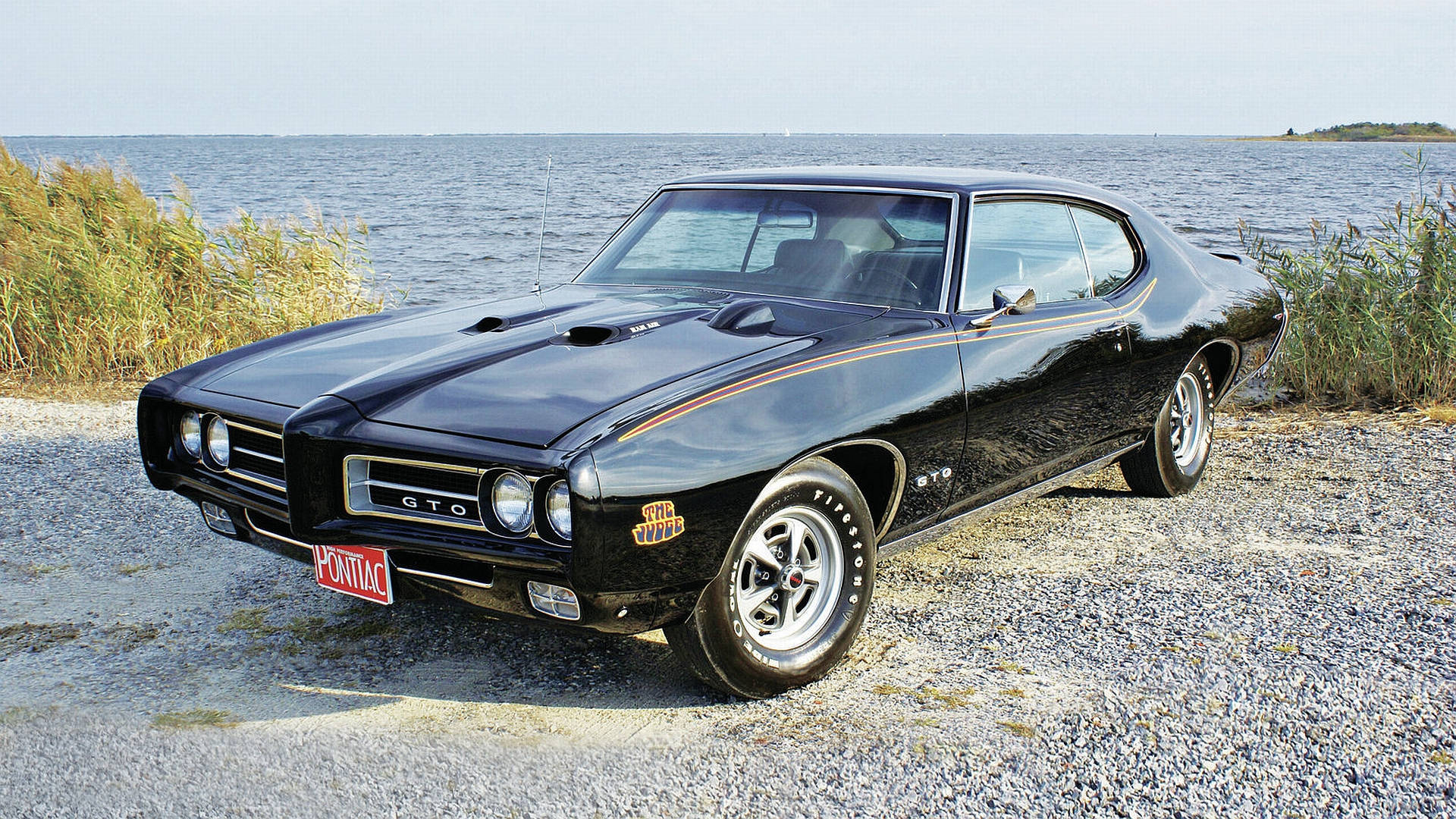
14. **Pontiac Aztek (2001-05)**Okay, let’s be honest, few cars in recent memory have sparked as much public ridicule and collective head-scratching as the Pontiac Aztek. When it debuted, its bizarre shape, awkward rear hatch, and general “unconventional” looks made it infamous. It was marketed as a “community-designed” vehicle, attempting to blend a minivan, SUV, and car into one, but the end result felt more like an unfocused mishmash.
The Aztek became the poster child for bad design, a punchline in automotive critiques and late-night talk show jokes. Despite its innovative utility features like a built-in tent and cooler, its polarizing aesthetics simply turned off most buyers. It was a commercial flop, failing to meet sales expectations, and quickly became synonymous with General Motors’ missteps at the turn of the millennium. Many would argue it was, quite simply, one of the ugliest cars ever made.
So, how does a car so widely mocked find its way onto a list of intriguing collectibles? The answer, incredibly, lies not on the road, but on the small screen. The Aztek found an unlikely savior in Walter White, the protagonist of the critically acclaimed TV series *Breaking Bad*. White drove an Aztek throughout much of the show, making it an indelible part of television history.
That powerful association with such a beloved and iconic character completely transformed the Aztek’s narrative. Suddenly, what was once a symbol of automotive design failure became a quirky, symbolic ride for one of TV’s most complex anti-heroes. This newfound cult status, fueled by *Breaking Bad* fandom, has generated a surprising wave of interest in a car that was once considered unsellable.
While its value still remains relatively low compared to other classics, with a median resale price around $5,500, prices have definitely been fluctuating upwards, especially for clean examples. The Aztek is a testament to how pop culture can completely redefine a car’s legacy, turning a widely ridiculed flop into a curious, even desirable, piece of modern automotive lore. It’s a truly wild redemption arc, even if it still might be ugly.
Car Model Information: 2001 Pontiac Aztek GT
Name: Pontiac Aztek
Manufacturer: General Motors
Production: July 2000 – December 2004
Assembly: Ramos Arizpe
Designer: Tom Peters (chief designer: 1997)
Class: Mid-size crossover SUV
BodyStyle: SUV
Platform: GM U platform
Related: Buick Rendezvous
Layout: Front-engine, front-wheel-drive layout
Engine: General Motors 60° V6 engine#LA1,V6
Transmission: GM 4T65-E transmission,Automatic transmission
Wheelbase: 108.3 in (2,751 mm)
Length: 182.1 in (4,625 mm)
Width: 73.7 in (1,872 mm)
Height: 66.7 in (1,694 mm)
Weight: 3,779–4,043 lb (1,714–1,834 kg)
Predecessor: Pontiac Sunrunner
Successor: Pontiac Torrent
ModelYears: 2001–2005
Categories: All-wheel-drive vehicles, All articles needing additional references, All articles with unsourced statements, Articles needing additional references from October 2013, Articles with short description
Summary: The Pontiac Aztek is a mid-size crossover SUV marketed by General Motors introduced in 2000 for the model years 2001 through 2005. As a four-door crossover with front-wheel drive and optional all-wheel drive, the Aztek featured a four-speed automatic transmission with a V6 engine. Marketed by Pontiac as a “sport recreational vehicle,” the Aztek used a shortened platform shared with GM’s minivans (e.g., the Pontiac Montana) featuring 94 cubic feet of cargo room with its rear seats removed. The design employed conventional rear outswing doors rather than sliding doors, and a split rear tailgate, the lower section formed with seat indentations and cupholders. Other features included a front center console that doubled as a removable cooler, optional rear stereo controls in the cargo area, optional sliding cargo floor with grocery compartments, and optional camping package with an attachable tent and air mattress.
Get more information about: Pontiac Aztek
Buying a high-performing used car >>>
Brand: Pontiac Model: Aztek
Price: $3,400 Mileage: 144,960 mi.
Read more about: From Worthless to Wanted: 16 American Cars Now Worth a Fortune
And there you have it, folks! Another deep dive into the fascinating, sometimes baffling, world of automotive redemption. From the sci-fi spectacle of the BMW 8 Series to the unexpected cult hero status of the Pontiac Aztek, these cars defy the initial judgment of the market. They prove that beauty, and value, truly are in the eye of the beholder—or, in many cases, in the rearview mirror of history. So next time you see a forgotten classic, remember, it might just be a future legend in disguise, waiting for its moment to shine. Keep those eyes peeled, because the next big collector’s item might just be the car everyone else laughed at!

